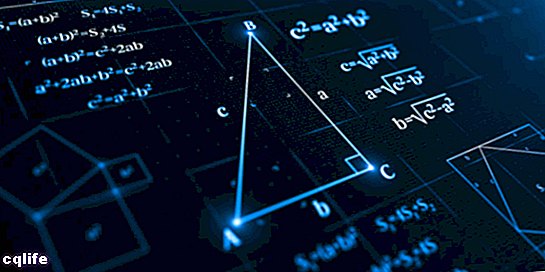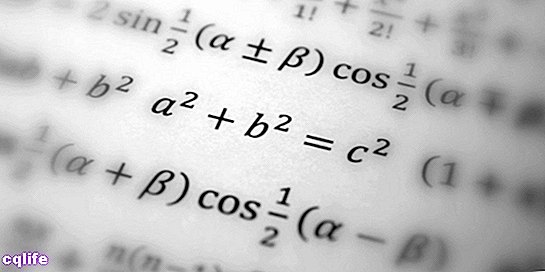We explain what trigonometry is, a little history about this branch of mathematics and the most important concepts it uses.

What is Trigonometry?
Trigonometry is, taking into account the etymological meaning of the word, the measurement of triangles (from the Greek trigone Y metron). Trigonometry is part of themathematical science and is in charge of studying the trigonometric ratios of sine, cosine, tangent, cotangent, secant and cosecant.
Trigonometry is used where it is required to measure with precision and is applied to geometry, it is special to the study of spheres within spatial geometry. Among the most common uses of trigonometry are the measurement of distances between stars or between geographic points.
A little history about trigonometry

Already the scholars of ancient Egypt and Babylon were aware of the theorems about the measurement of similar triangles and proportions from its sides. Babylonian astronomers are known to record the movements of the planets and eclipses. The Egyptians, two thousand years before Christ, already used trigonometry in a primitive way to build their pyramids.
The foundations of current trigonometry were developed in Ancient Greece, but also in India and in the hands of Muslim scholars. Scholars of ancient trigonometry were Hipparchus of Nicea, Arybhata, Varahamihira, Brahmagupta, Abu’l-Wafa, among others.
The first use of the "bosom" function dates back to the 8th century BC. C. in India. Who introduced the analytical treatment of trigonometry in Europe It was Leonhard Euler. They were then known as the "Euler formulas."
They started from the correspondence that exists between the length of the sides of a triangle since they maintain the same proportion. If a triangle is similar then the relationship between the hypotenuse and a leg is constant. If we observe that a hypotenuse has twice the length, then the legs will be.
Most important concepts of trigonometry

Three units are used to measure angles:
- The radian. Which is used more than anything in mathematics.
- The sexagesimal degree. Most used in everyday life.
- The decimal system. Used in surveying and construction.
Trigonometry is defined in certain functions that are applied in various fields to measure the relationship between the sides and angles of a right triangle or a circle. These functions are sine, cosine, and tangent. Inverse trigonometric ratios can also be realized, namely: cotangent, secant, and cosecant.
In order to carry out these operations, it is necessary to take into account certain concepts. The side opposite the right angle is called the hypotenuse (h) which is the longest side of the triangle. The opposite leg is the one that is on the opposite side to the angle in question while we call the one that is next to it adjacent.
- To obtain the sine of a given angle, the length of the opposite leg and that of the hypotenuse must be divided (that is, opposite leg on hypotenuse: a / h).
- The cosine is obtained from the relationship between the length of the adjacent leg and the hypotenuse (adjacent leg on hypotenuse: a / h).
- To obtain the tangent, the length of both legs is divided (that is, the division is performed: o / a).
- For the cotangent function, the length of the adjacent leg is divided by the opposite (understood as: a / o).
- For the secant function, the length of the hypotenuse on the adjacent leg is related (that is: h / a).
- Finally, to determine the cosecant function, the length of the hypotenuse is divided on the opposite leg (thus obtaining: h / o).
